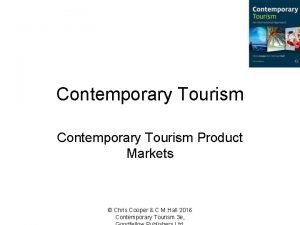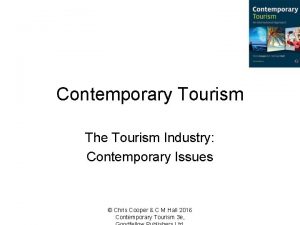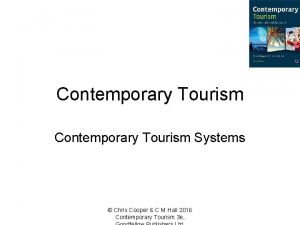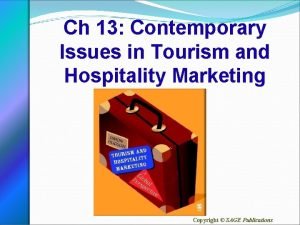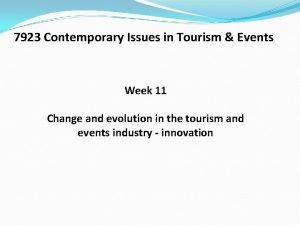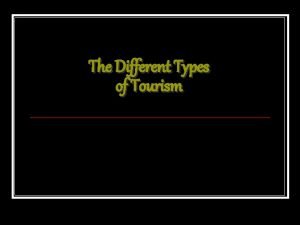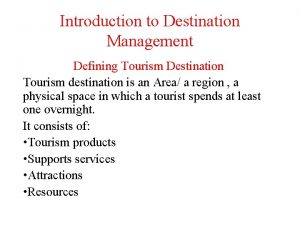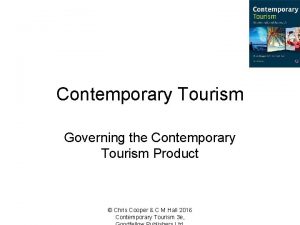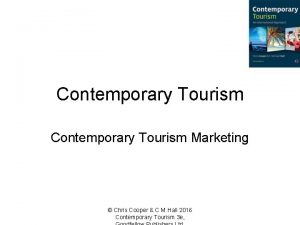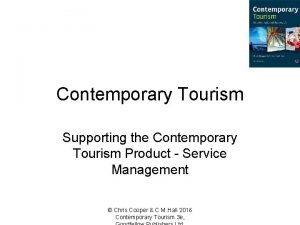Contemporary Tourism The Contemporary Tourism Destination Chris Cooper








- Slides: 8

Contemporary Tourism The Contemporary Tourism Destination © Chris Cooper & C M Hall 2016 Contemporary Tourism 3 e,

Lecture Objectives • Understand the core elements in the destination concept • Identify the key elements that make up ‘place’ • Understand different concepts of scapes • Understand the concept of a tourism resource and its dynamic nature • Recognise the cultural basis for tourism resources and attractions • Appreciate the challenges facing DMOS with respect to controlling the&destination product © Chris Cooper C M Hall 2016 Contemporary Tourism 3 e,

Destinations • The core of tourism • Most important yet complex aspect of tourism – numerous different interpretations • Different scales but ultimately connected to a location or place • Exist because they are visited © Chris Cooper & C M Hall 2016 Contemporary Tourism 3 e,

Places • Location: specific point on the earth’s surface • Locale: material or physical setting for people’s daily social relations, actions and interactions – scapes: – Landscapes – Servicescapes – Experiencescapes • Sense of place: the subjective, personal and emotional attachments and relationships people have to©a. Chrisplace Cooper & C M Hall 2016 Contemporary Tourism 3 e,

Resource Base • ‘That component of the environment which either attracts the tourist and/or provides the infrastructure necessary for the tourist experience’ • Can be scarce or free • Has to have utility value • Attractions are a specific type of resource • What constitutes a resource is culturally determined by the consumer Chris Cooper &over C M Hall time 2016 – Therefore can©change Contemporary Tourism 3 e,

Attractions • Often classifies by – Cultural/manmade – Natural • Problematic because does not account for changes in taste or perception – Example of wild nature – Example of sunbathing and having a suntan © Chris Cooper & C M Hall 2016 Contemporary Tourism 3 e,

Requirements • To attract tourists destinations need: – Physical and cultural attractions – Facilities and services – Infrastructure – Information services © Chris Cooper & C M Hall 2016 Contemporary Tourism 3 e,

Recommended Readings • Hall, C. M. (2005). Tourism: Rethinking the Social Science of Mobility, Harlow: Prentice-Hall (Chapter 6) • Leiper, N. (2000). Are destinations ‘the heart of tourism’? The advantages of an alternative description. Current Issues in Tourism 3, 364 -68. • Pike, S. & Page, S. (2014). Destination Marketing Organizations and destination marketing: A narrative analysis of the literature. Tourism Management 41, 202 -227. © Chris Cooper & C M Hall 2016 Contemporary Tourism 3 e,
